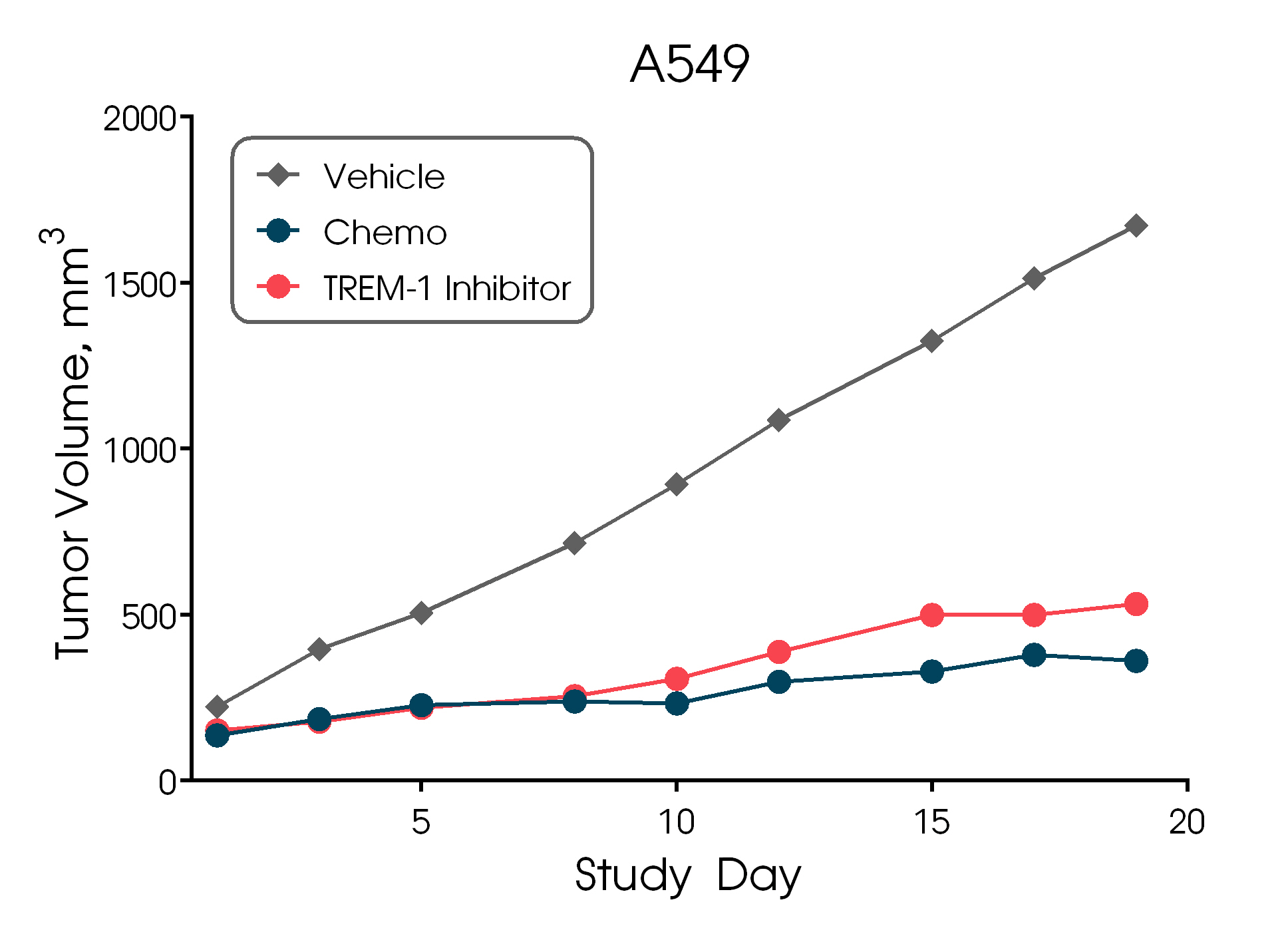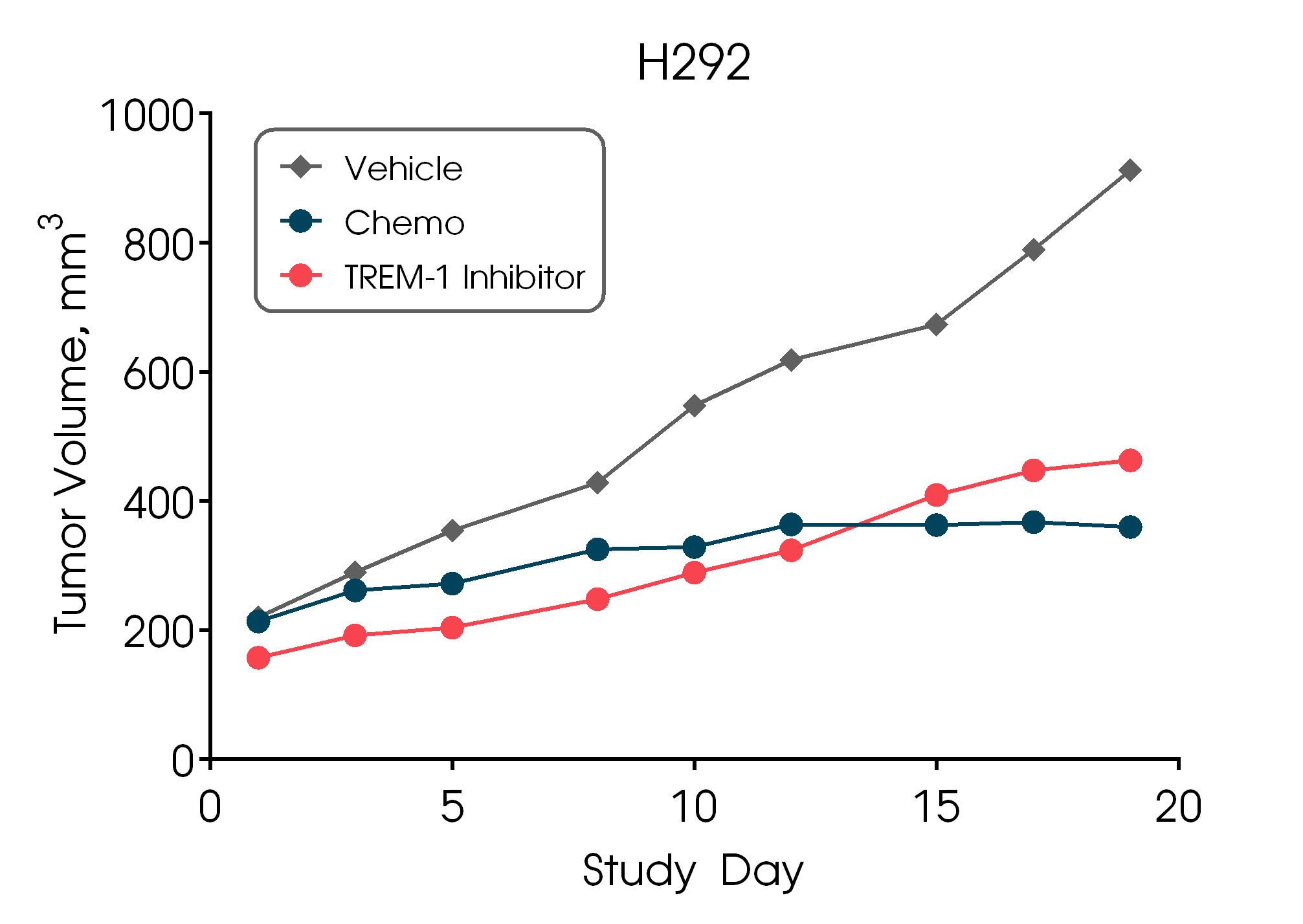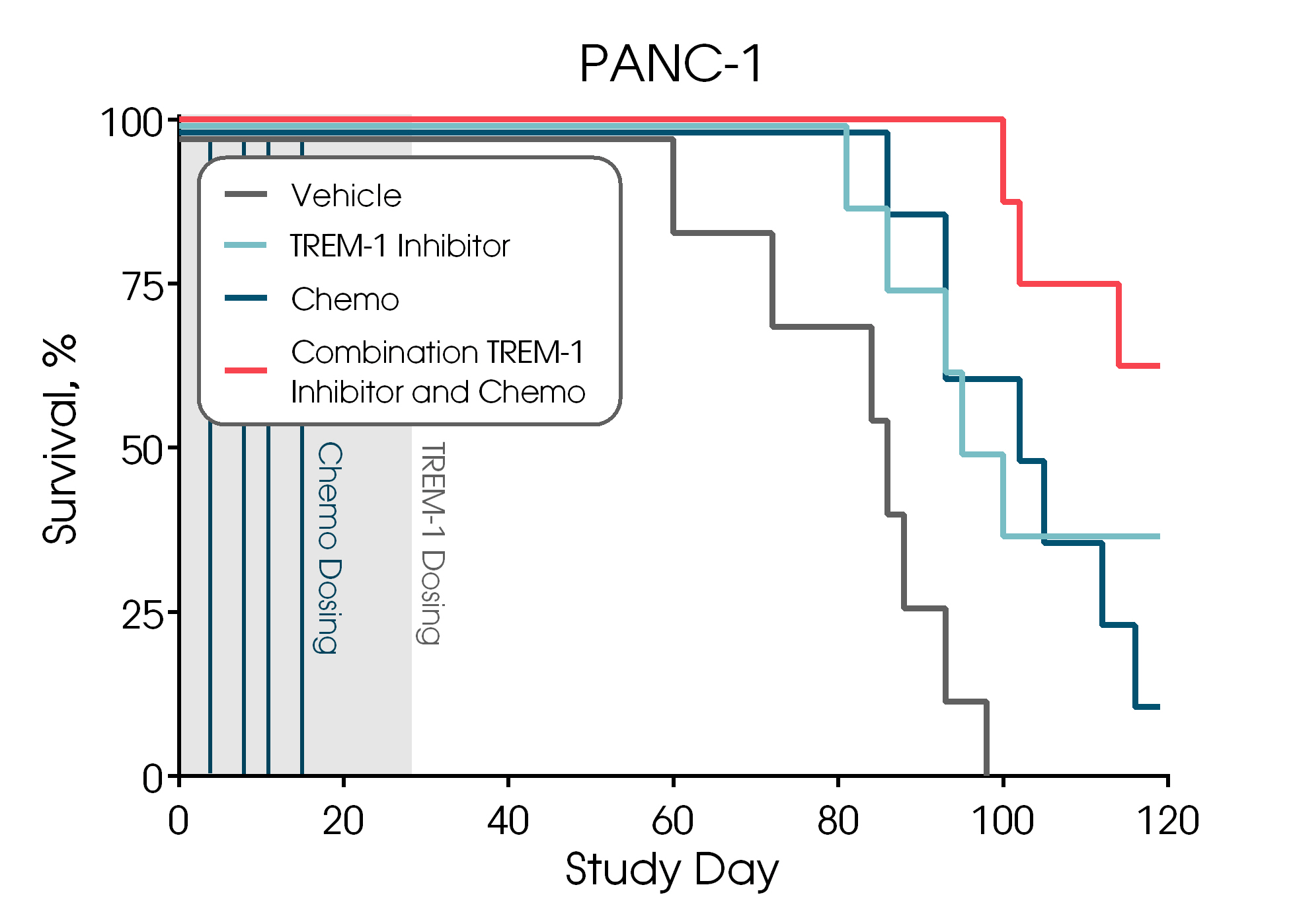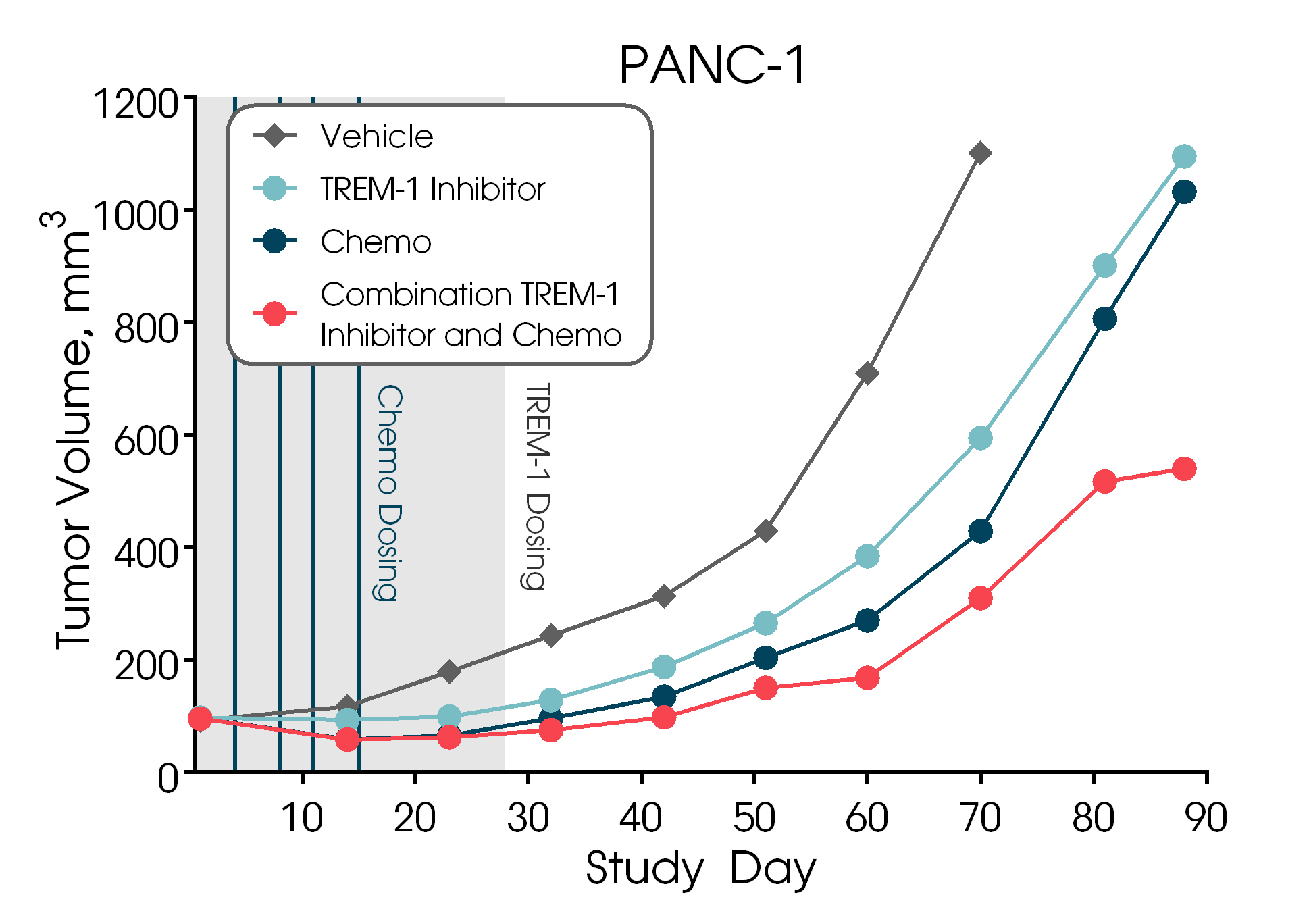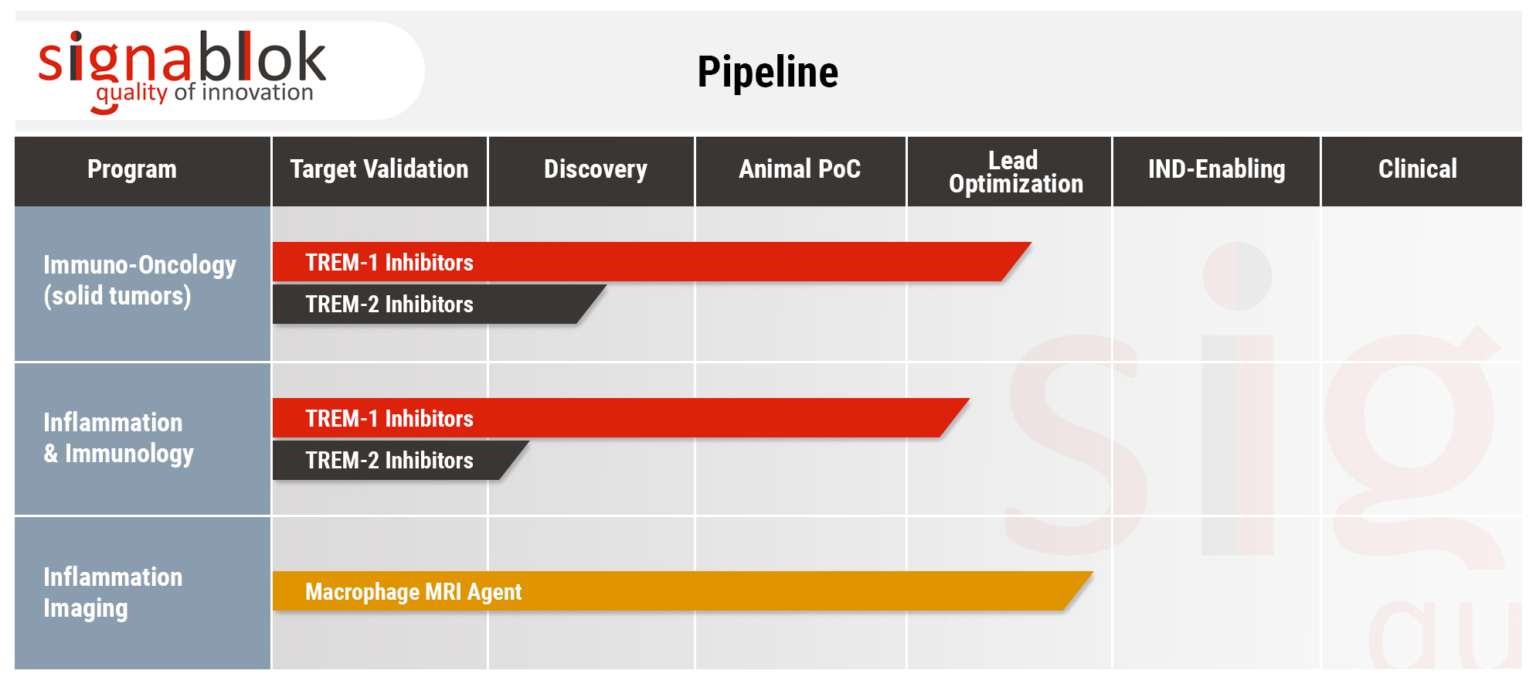The global cancer burden is estimated to have risen to 19.3 million new cases and 10.0 million deaths in 2020. One in 5 people worldwide develop cancer during their lifetime, and one in 8 men and one in 11 women die from the disease.
Inflammation is often associated with the development and progression of cancer and affects immune surveillance and responses to therapy. For example, inflammatory processes are key mediators of pancreatic cancer development and progression. Low expression of TREM-1, an inflammation amplifier, in cancerous tissues of patients with pancreatic cancer is associated with over 3-fold higher survival probability compared to that of patients with high TREM-1 expression.
These links between cancer and inflammation are starting to have implications for cancer prevention and treatment.
New mechanism-based TREM-1-targeting SignaBlok's therapy can be used as a standalone treatment or in combination with frontline chemo- and immunotherapies for solid tumors. Good tolerability and lack of cytotoxicity of SignaBlok's TREM-1 inhibitor suggest its potential use as an alternative maintenance therapy.
Non-Small Cell Lung Cancer (NSCLC)
With 1.8 million new cancer cases annually and 1.6 million deaths each year, lung cancer has the highest mortality of all cancers in the world. NSCLC accounts for about 85–90% of all lung cancer diagnoses, and despite advancements in treatment, results in more deaths than any other cancer. The infiltrate of most solid tumors contains tumor-associated macrophages (TAMs). The increased number of TAMs is associated with poor prognosis in NSCLC. TREM-1 is upregulated in NSCLC but not detected in normal lung tissue. In patients with NSCLC, overexpression of TREM-1 on TAMs significantly correlates with cancer recurrence and poor survival: a 4-year survival rate of patients with low TREM-1 expression is 3-fold higher than that of patients with high TREM-1 expression.
In preclinical models of NSCLC, SignaBlok's ligand-independent TREM-1 inhibitor is well-tolerated and inhibits tumor growth as effectively as paclitaxel, a frontline anti-cancer ("antineoplastic" or "cytotoxic") chemotherapy drug, which is widely used for the treatment of NSCLC.
Pancreatic Cancer (PC)
With 500,000 patients worldwide, PC is the 12th most common cancer and the seventh leading cause of cancer-related deaths. The general 5-year survival rate for people with PC is 9%. Current treatments do not improve survival much and reduce life quality. Over 30 years, only 3 Phase III clinical trials demonstrated marginally extended lifespan, highlighting an urgent need for new therapies.
In PC patients, overexpression of TREM-1 correlates with poor survival, implicating TREM-1 as a new target.
In preclinical models of PC, SignaBlok's well-tolerable TREM-1 inhibitor standalone inhibits tumor growth and promotes survival. In combination with standard first-line chemo treatment, TREM-1 inhibitor sensitizes the tumor to chemo and at least, triples survival rate as compared with chemo alone.
Other Cancers
Recent preclinical studies demonstrated that SignaBlok's TREM-1 inhibitor reverses immunosuppression and anti-programmed cell death ligand-1 (anti-PD-L1) resistance in experimental liver and triple negative breast cancer.
TREM-1/TREM-2 pathway involvement in these and other cancers is being increasingly reported in scientific literature, suggesting an opportunity for SignaBlok's TREM-1 and TREM-2 inhibitors in multiple cancers.
Further expanding on its SCHOOL technology platform, current SignaBlok's oncology program explores the use of TREM-1 and TREM-2 therapeutic modalities in the treatment of different types of cancers in combination with first- and second-line treatment modalities including chemo- and immunotherapies as well as their use as a maintenance therapy.


